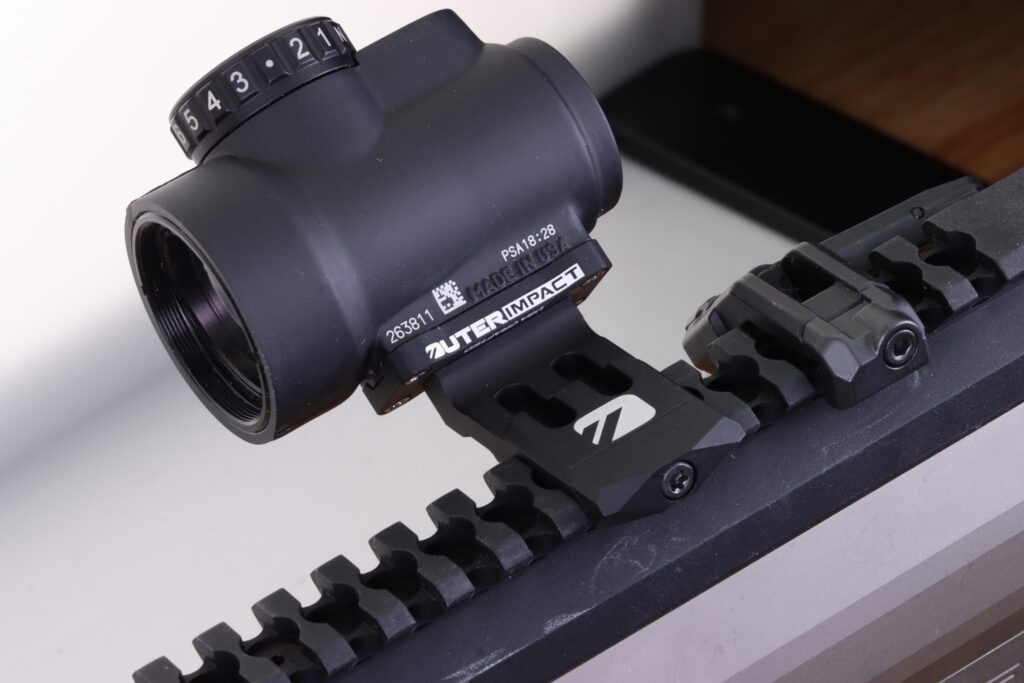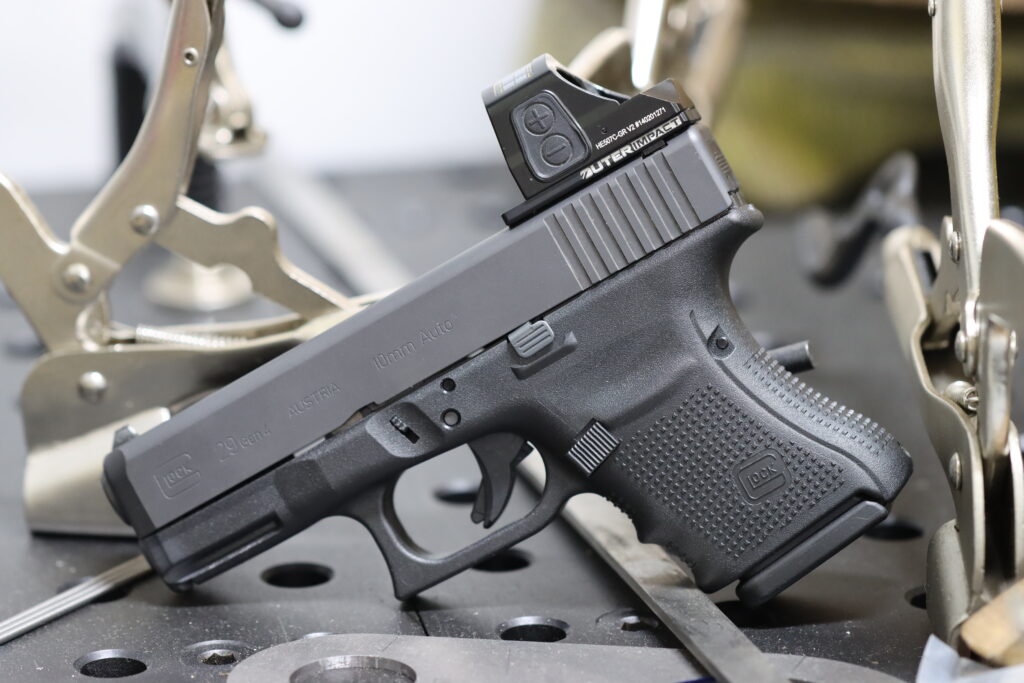Understanding Prismatic Sights: Your Introduction To These Amazing Optics
Introduction: Welcome to our comprehensive guide on prismatic sights, a fascinating category within the realm of red dot optics. In this article, we’ll delve into the intricacies of prismatic sights, exploring their design, functionality, and advantages for shooters. All OuterImpact mounts are precision machined from aircraft grade billet 7075 aluminum and backed by a Lifetime Warranty.

What are Prismatic Sights? Prismatic sights are compact optical devices designed to provide magnification and aiming capabilities in a rugged and durable package. Unlike traditional red dot sights, which utilize reflective or holographic technology, prismatic sights employ a prism to bend and focus light, offering shooters a clear and magnified view of their target.
Components of Prismatic Sights: Prismatic sights typically consist of the following components:
- Body: The main housing of the sight, which contains the optical elements and mounting interface.
- Objective Lens: The front lens of the sight, responsible for gathering light and transmitting it to the prism.
- Prism Assembly: The heart of the prismatic sight, where light is refracted and magnified to create the sight picture.
- Reticle: Located within the prism assembly, the reticle provides aiming reference points for the shooter.
- Eyepiece: The rear lens of the sight, through which the shooter views the sight picture.
- Adjustment Turrets: Used to zero the sight and make adjustments for windage and elevation.
- Illumination Control: Some prismatic sights feature illuminated reticles for enhanced visibility in low-light conditions.

How Do Prismatic Sights Work? Prismatic sights utilize a prism to bend and magnify light, allowing shooters to see distant targets with clarity and precision. When light enters the objective lens, it is focused and directed onto the prism assembly. The prism then refracts the light, magnifying the image and projecting it onto the shooter’s eye through the eyepiece. The reticle, located within the prism assembly, provides aiming reference points superimposed on the target.
Advantages of Prismatic Sights: Prismatic sights offer several advantages over traditional red dot optics, including:
- Magnification: Prismatic sights provide magnification, allowing shooters to engage targets at longer distances with improved accuracy.
- Compact Design: Prismatic sights are typically more compact than traditional rifle scopes, making them ideal for use on rifles, carbines, and tactical firearms.
- Fixed Eye Relief: Unlike variable magnification scopes, prismatic sights offer a fixed eye relief, ensuring consistent sight picture and eye position.
- Durable Construction: Prismatic sights are built to withstand recoil, shock, and harsh environmental conditions, making them suitable for military, law enforcement, and civilian use.
Conclusion: Prismatic sights combine the compactness of red dot optics with the magnification of traditional rifle scopes, offering shooters a versatile and reliable aiming solution for a wide range of applications. Whether you’re patrolling the streets or hitting the range, a prismatic sight can enhance your shooting performance and situational awareness. Stay tuned for our next installment, where we’ll explore the world of reflex sights. You can read more of our red dot series here.
